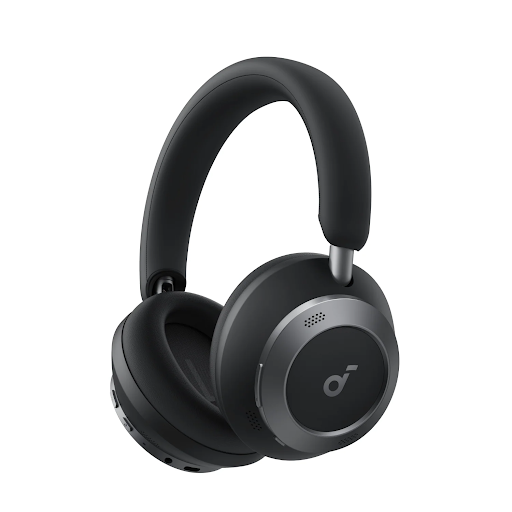As technology continues to shape our lives, wireless headphones have evolved from a luxury to an everyday necessity, catering to a vast range of activities—from work and study to fitness, gaming, and even leisure. Quality headphones once confined to bulky sets are now sleek, portable, and supple, tailored to suit an on-the-go lifestyle. As a decade long technology user and an early adopter of audio gadgets, wielding headphones has streamlined countless manual tasks to a mere audio command—ethereally woven into the fabric of modern existence.
In this article, we delve into the mechanisms of wireless headphones, analyzing what sets them apart from wired alternatives. In addition, we dissect the most important factors—often disregarded—that when paid heed to, can elevate an everyday device such as headphones into a game changer.
Overview of wireless headphones
Wireless headphones are devices that pair with a smartphone, laptop, gaming console, or even a smart TV via wireless communications like Bluetooth, radio frequency, or IR signals. As an addition to the modern day plethora of gadgets game changers, headphones are amalgamated into lifestyle-friendly fitness, media consumption, and work-from-home headphones, all tailored to the user’s need.
Most wireless headphones are compatible with Bluetooth 5.0, which offers enhanced connection stability, lower power consumption, a longer range, and wider compatibility with devices. Certain brands and models also support low-latency audio, which is a pivotal feature for gamers and video editors that require precise syncing between audio and video inputs.
How Has the Demand for Wireless Headphones Increased So Drastically?
There are several varying factors that contributed to the increased demand for wireless headphones, specifically over the last few years. With the advancements made in ergonomic design, sound technology, and battery life, these headphones are now far more efficient and easier to use for the vast majority. Personally, the convenience offered by wireless headphones allowed me to be mobile during Zoom meetings, jog hands-free, and made the safe from dealing with entangled wires.
These headphones are multifunctional and can be used for a myriad of activities. You can now seamlessly use them for music listening, attending classes, taking calls, or even watching shows. Headphones are improving overall user experience by offering features like active noise cancellation, transparency mode, touch controls, and multi-device pairing.
Primary Specifications That Differentiate Wireless Headphone Quality
- When buying wireless headphones, a number of aspects affect satisfaction and performance. The audio quality is certainly among the most important. For seamless bluetooth audio transmission, look for high-resolution audio codecs such as AAC, aptX, or LDAC. If you are accustomed to using wired headphones, then you will appreciate the difference these codecs make.
- Battery life is another key criteria. Most wireless headphones today have a playback time of 15 to 40 hours depending on the usage and features such as Advanced Noise Canceling (ANC). For me, a pair of wireless headphones with rapid charging was a welcome investment. A quick 10-minute charge delivers hours of listening, which is a luxury during a busy pace of life.
- Ensure that comfort and fit are among the top priorities, especially during extended periods of use. In most cases, over-ear models have greater sound isolation and comfort, while in-ear models are more portable and more resistant to sweat and water, which is great for the gym or daily commutes.
Wireless Headphones vs Wired: Which is Better?
This argument relies heavily on personal priorities. For audiophiles and studio professionals, wired headphones retain a significant place in the marketplace because of their ability to deliver lossless audio with zero latency. For the average user, however, the benefits of wireless headphones outweigh their disadvantages.
Worn wireless, headphones allow the user to exercise, clean, or commute to work untethered to a device. This is a tremendous relief. Added benefits include less cord-related damage to the device and a reduction in replacement or maintenance issues.
With wireless headphones, my work and study distractions decreased. During calls and lectures, I no longer had to sit next to my laptop or phone. This nearby device freedom increased my comfort and productivity.
Common Use Cases for Wireless Headphones
Wide-ranging scenarios and a growing number of users now make them indispensable. For students, wireless headphones are indispensable for attending online classes, recording notes, and reviewing lectures. These headphones are equally of great assistance to professionals due to crystal-clear call integration, voice assistants, and seamless device-switching during meetings and travel.
Fitness enthusiasts appreciate a snug grip and water-resistant features, making these headphones ideal for yoga, running, or workouts. Content creators and gamers appreciate the low latency and surround sound features that add immersion which wired models often struggle to deliver.
Are Wireless Headphones Safe for Daily Use?
At reasonable volume levels, wireless headphones are safe for everyday use. While the public has raised concerns around the radiation emitted from Bluetooth technology, wireless headphones have not been found to pose serious health risks according to scientific studies. Additionally, most units comply with SAR (Specific Absorption Rate) regulations, minimizing radio wave emission.
To avoid sustained hearing damage, it is best to adhere to the 60/60 rule, maintaining volume below 60% for no more than 60 minutes. Volume control, taking breaks, and the use of noise canceling headphones to prevent the need for louder settings can safeguard hearing in the long run.
Common Questions About Wireless Headphones
Do wireless headphones operate without Bluetooth?
The majority of wireless headphones utilize Bluetooth technology, but a select few high-end models utilize radio frequency or infrared, mainly designed for TV use. Regardless, Bluetooth is still the most convenient and universal standard.
Can wireless headphones connect to multiple devices simultaneously?
Yes, with recent innovations in wireless headphones, many now support multi-point connectivity, enabling users to connect to two devices, such as a phone and laptop, at the same time and switch seamlessly between them.
What distinguishes wireless headphones from true wireless earbuds?
While true wireless earbuds are entirely devoid of wires, as the name suggests, wireless headphones may feature lines connecting the two earbuds. True wireless earbuds are the most compact and portable form of earbuds.
Are wireless headphones effective for studying?
Absolutely. Wireless headphones with effective noise cancellation or ANC are ideal for students. Such headphones are useful in libraries, dorms, or during home study sessions, as they reduce distractions and help the user concentrate.
Can voice assistants be used with wireless headphones?
Typically, yes. Most recent models of wireless headphones enable use of voice assistants, for example, Google Assistant, Siri and Alexa, hands-free, letting users control music, make calls, or ask questions.
Final Thoughts
The unparalleled blend of mobility, sound quality, smart features, and aesthetic appeal wire-free headphones offer makes them a worthy investment for almost all users. With such compelling benefits, they are no longer a trend but the modern standard.
From personal experience, the transition changed how I navigate my daily tasks. From cooking, where I can seamlessly listen to podcasts, to remote meetings that I can attend hands-free, to relaxing bed-timed music, life has been made much more streamlined and enjoyable with the use of headphones.
As with other technologies, the audio experience we are offered will continue to improve. If you intend to buy your first pair, or improve an older version, now is the ideal time.

















